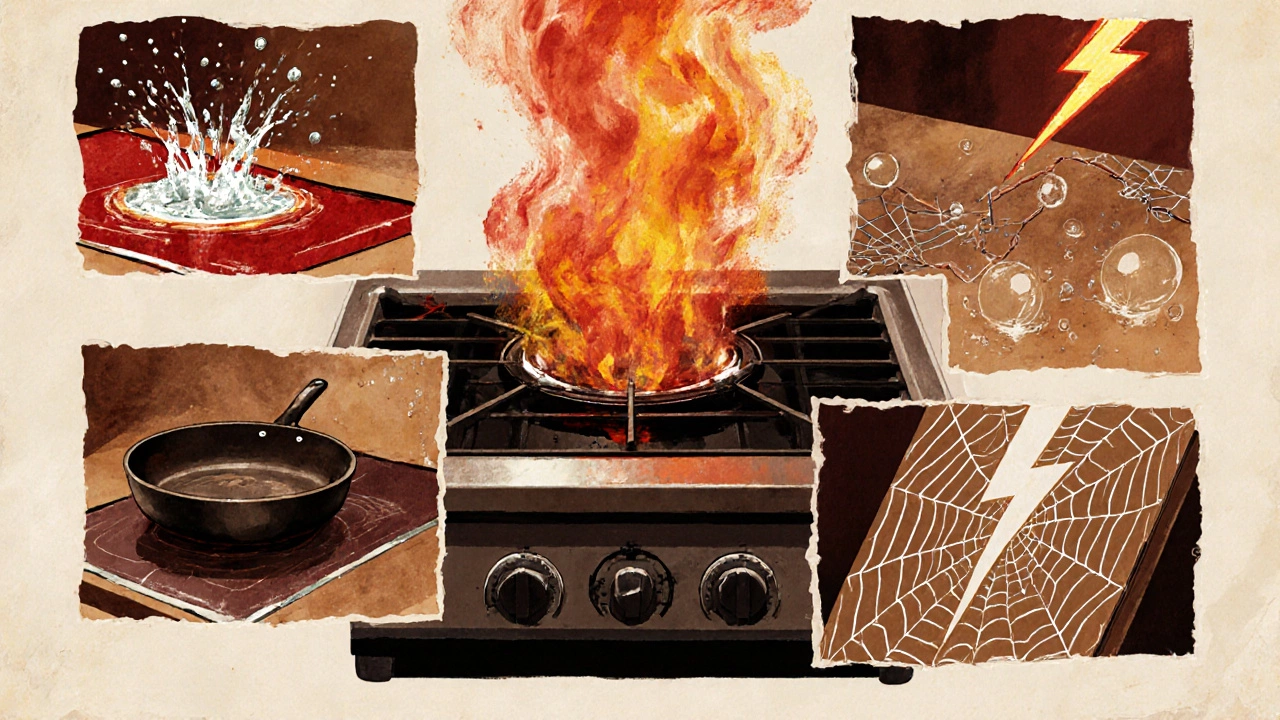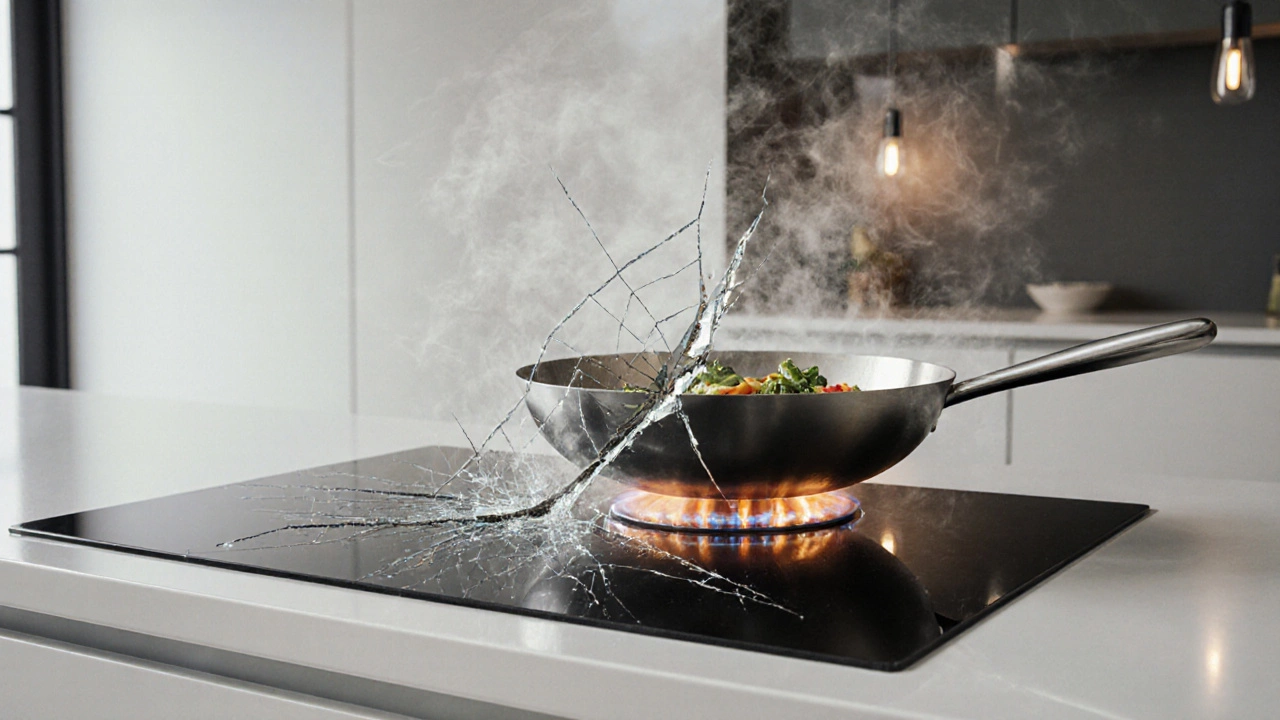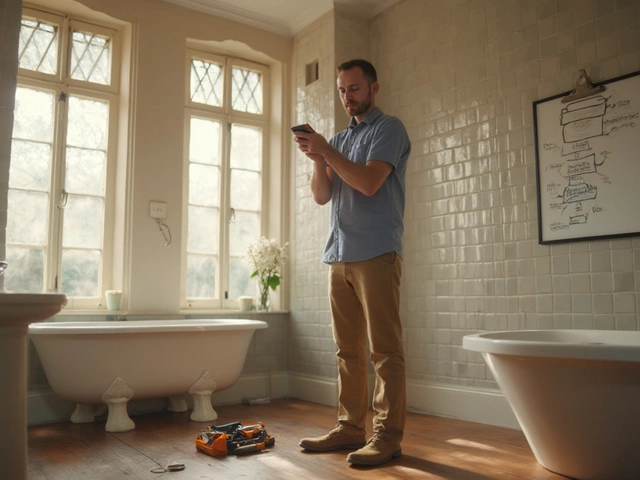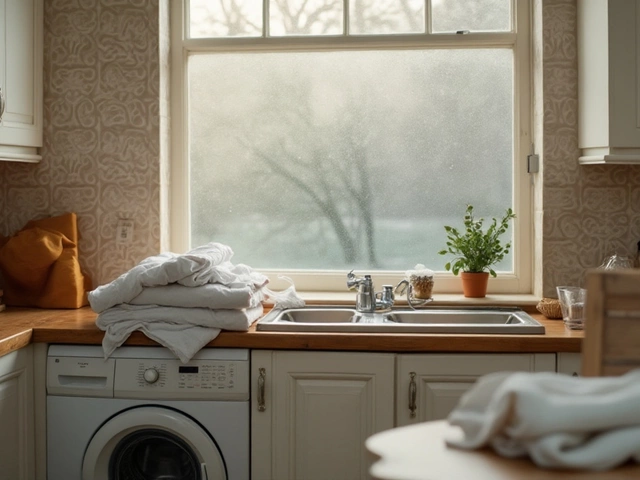Hob Crack Diagnostic Tool
Diagnose Your Hob Crack
Answer these questions to identify the most likely cause of your hob's crack.
Warning: This tool provides general guidance only. Always consult a professional for electrical safety checks.
Imagine you’re cooking a quick dinner and, in the middle of a stir‑fry, the glass surface of your stove shatters. It’s startling, messy, and costly. Understanding why an electric hob is a cooking appliance with an electrically heated glass‑ceramic surface that transfers heat to pots and pans can crack helps you avoid the panic and decide the right fix.
Key Takeaways
- Thermal shock, impact, and manufacturing flaws are the top reasons for cracks.
- Regular cleaning, proper cookware, and gradual heating reduce risk.
- Small hairline cracks may be repaired; large fractures usually mean replacement.
- Professional assessment is essential for electrical safety.
- Know the warning signs before a full break‑out occurs.
How an electric hob is built
Before diving into the why, it helps to know what you’re dealing with. Most modern hobs use a glass ceramic cooktop-a smooth, white surface that can withstand high temperatures yet conducts heat efficiently. Underneath lies a network of heating elements: either radiant coils for traditional electric hobs or an induction coil for induction‑type models. A temperature sensor monitors the surface, while a control board regulates power.
What makes a hob crack?
The glass‑ceramic layer is strong, but it’s not indestructible. Below are the most common culprits.
| Cause | How it happens | Typical signs |
|---|---|---|
| Thermal shock | Rapid temperature change, e.g., splashing cold water on a hot surface | Hairline fissure spreading outward |
| Mechanical impact | Heavy pots, accidental drops, or striking the surface with a utensil | Visible chip or star‑shaped crack |
| Manufacturing defect | Inconsistent glass‑ceramic composition or weak bonding | Crack appears soon after installation |
| Power surge | Sudden voltage spikes overload heating elements | Crack often accompanied by flickering lights |
| Aging & wear | Repeated heating cycles weaken the material over years | Multiple fine cracks forming a spider‑web pattern |
Thermal shock
When you pour a cold liquid onto a surface that’s been heating at 250 °C, the glass‑ceramic contracts suddenly. The internal stress exceeds the material’s tensile strength, causing a crack. This is why many manufacturers warn against abrupt cooling.
Mechanical impact
Even a light tap with a metal spatula can create micro‑chips if the surface already has hidden stress. Dropping a cast‑iron skillet-a weight of 5 kg-directly onto the cooktop is a recipe for a clean break.
Manufacturing defect
Sometimes the glass‑ceramic sheet has microscopic bubbles or uneven thickness. These weak points are invisible until a heat cycle reveals them. If your hob cracked within the first year, this is the likely suspect.
Power surge
A sudden voltage spike-perhaps caused by a lightning strike or faulty wiring-can push the heating element beyond design limits. The excess heat expands the glass quicker than normal, triggering a crack. This is a rare but documented scenario in older homes with outdated circuits.
Aging & wear
Every heating cycle expands and contracts the glass‑ceramic a tiny bit. Over a decade, these tiny movements accumulate, reducing the material’s elasticity. The result is a network of fine cracks that can coalesce into a larger break.
Spotting a crack early
Early detection saves money. Look for these indicators during routine cleaning:
- Faint lines that appear under bright light.
- Discoloration or a “rainbow” effect around a potential fracture.
- Unusual buzzing or flickering when the hob is on.
If you notice any of these, turn the hob off immediately, let it cool, and inspect the surface closely. Using a flashlight at a low angle helps reveal hairline cracks.

DIY vs. professional repair
Not all cracks are created equal. Small, surface‑level fissures (< 2 mm) can sometimes be sealed with a specialised glass‑ceramic repair kit. These kits contain a clear, heat‑resistant resin that fills the groove and restores structural integrity.
However, if the crack runs through the entire thickness, or if you see multiple cracks, a professional replacement is the safe route. A certified repair technician will:
- Disconnect power at the breaker.
- Remove the hob from the countertop.
- Replace the glass‑ceramic panel or the whole unit.
- Test voltage and ensure the control board functions correctly.
Attempting a full panel swap yourself is risky: electrical components, heavy glass, and precise alignment are involved. The cost of a professional repair (often £150‑£250 in the UK) is usually lower than a brand‑new hob for high‑end models.
Prevention checklist
Keep your electric hob crack‑free with these habits:
- Heat the hob gradually-start at medium, then increase.
- Avoid pouring cold liquids on a hot surface; let them warm up first.
- Use flat‑bottomed cookware that matches the hob’s size.
- Never slide heavy pots; lift them instead.
- Clean spills while the surface is warm, not scorching.
- Check your home’s wiring; install surge protectors if you have an older circuit.
What to do if a crack occurs
- Turn off and unplug the hob. Safety first-any exposed electrical parts become a shock hazard.
- Inspect the crack length and depth. Small surface cracks can be photographed for insurance or warranty claims.
- Contact the manufacturer’s warranty service if the hob is under warranty (usually 2‑3 years). Provide the purchase receipt and photos.
- If out of warranty, call a certified repair technician. Ask for a written estimate before any work starts.
- Consider replacement if the repair cost exceeds 60 % of a new unit’s price.

Cost considerations
Repair costs vary:
- Glass‑ceramic panel replacement: £120‑£220.
- Full hob unit replacement: £300‑£600 for mid‑range models.
- DIY repair kits: £15‑£30 (only for tiny fissures).
Factor in labor, travel fees, and disposal of the old glass. Some local councils charge a small fee for hazardous waste removal.
Final thoughts
Cracks in an electric hob are usually preventable with mindful cooking habits and regular maintenance. When they do happen, a quick assessment will tell you whether a simple fix or a full replacement is needed. Remember, the glass‑ceramic surface may look sleek, but it’s a high‑tech component that deserves respect-just like any other appliance in your kitchen.
Frequently Asked Questions
Can I use a metal spatula on an electric hob?
Yes, but avoid hitting the glass directly. Light scraping can create stress points. Use silicone or wooden tools for most tasks.
Do power surges really cause cracks?
They can. A sudden voltage spike can overheat the heating element, expanding the glass faster than normal and leading to fractures.
Is a hairline crack dangerous?
It isn’t immediately dangerous, but it can spread. Treat it as a warning sign and arrange a repair before it worsens.
How long does a professional repair take?
Most technicians can replace the glass‑ceramic panel in 1‑2 hours, plus travel time. Full unit swaps may need half a day.
Can I clean a cracked hob safely?
If the crack is minor, wipe gently with a soft cloth. Avoid abrasive cleaners and never use large amounts of water that could seep into the fracture.







